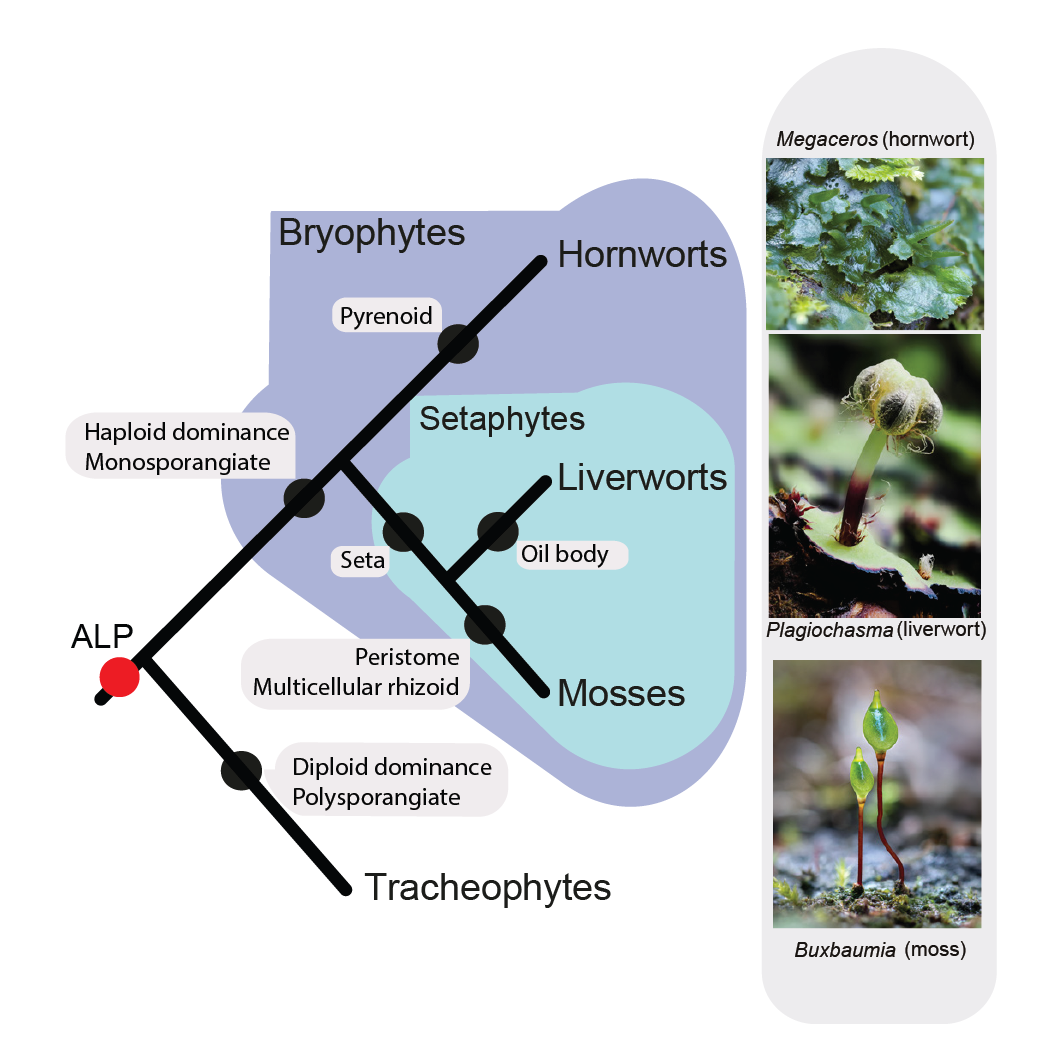 Bechteler J., G. Peñaloza-Bojacá, D. Bell, G. Burleigh, S. F. McDaniel, E. C. Davis, E. B. Sessa, A. Bippus, D. Christine Cargill, S. Chantanoarrapint, I. Draper, L. Endara, L. L. Forrest, R. Garilleti, S. W. Graham, S. Huttunen, J. Jauregui Lazo, F. Lara, J. Larraín, L. R. Lewis, D. G. Long, D. Quandt, K. Renzaglia, A. Schäfer-Verwimp, G. Ee Lee, A. S. Pinilla, M. von Konrat, C. E. Zartman, M. Regina Pereira, B. Goffinet & J. C. Villarreal. 2023. Comprehensive phylogenomic time tree of bryophytes reveals deep relationships and uncovers gene incongruences in the last 500 million years of diversification. American Journal of Botany 110: e16249. pdf
Bechteler J., G. Peñaloza-Bojacá, D. Bell, G. Burleigh, S. F. McDaniel, E. C. Davis, E. B. Sessa, A. Bippus, D. Christine Cargill, S. Chantanoarrapint, I. Draper, L. Endara, L. L. Forrest, R. Garilleti, S. W. Graham, S. Huttunen, J. Jauregui Lazo, F. Lara, J. Larraín, L. R. Lewis, D. G. Long, D. Quandt, K. Renzaglia, A. Schäfer-Verwimp, G. Ee Lee, A. S. Pinilla, M. von Konrat, C. E. Zartman, M. Regina Pereira, B. Goffinet & J. C. Villarreal. 2023. Comprehensive phylogenomic time tree of bryophytes reveals deep relationships and uncovers gene incongruences in the last 500 million years of diversification. American Journal of Botany 110: e16249. pdf
Abstract reads:
Premise: Bryophytes form a major component of terrestrial plant biomass, structuring ecological communities in all biomes. Our understanding of the evolutionary history of hornworts, liverworts and mosses has been significantly reshaped by inferences from molecular data, which have highlighted extensive homoplasy in various traits and repeated bursts of diversification. However, the timing of key events in the phylogeny, patterns and processes of diversification across bryophytes remain unclear.
Methods: Using the GoFlag probe set we sequenced 405 exons representing 228 nuclear genes for 531 species from 52 of the 54 orders of bryophytes. We inferred the species phylogeny from gene tree analyses using concatenated and coalescence approaches, assessed gene conflict, and estimated the timing of divergences based on 29 fossil calibrations.
Results: The phylogeny resolves many relationships across the bryophytes, enabling us to resurrect five liverwort orders and recognize three more, and propose ten new orders of mosses. Most orders originated in the Jurassic and diversified in the Cretaceous or later. The phylogenomic data also highlight topological conflict in parts of the tree, suggesting complex processes of diversification that cannot be adequately captured in a single gene-tree topology.
Conclusions: We sampled hundreds of loci across a broad phylogenetic spectrum spanning at least 450 Ma of evolution; these data resolved many of the critical nodes of the diversification of bryophytes. The data also highlight the need to explore the mechanisms underlying the phylogenetic ambiguity at specific nodes. The phylogenomic data provide an expandable framework toward reconstructing a comprehensive phylogeny of this important group of plants.